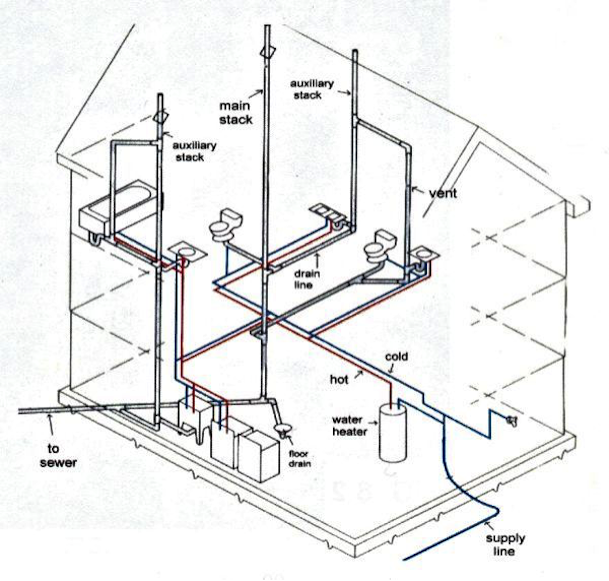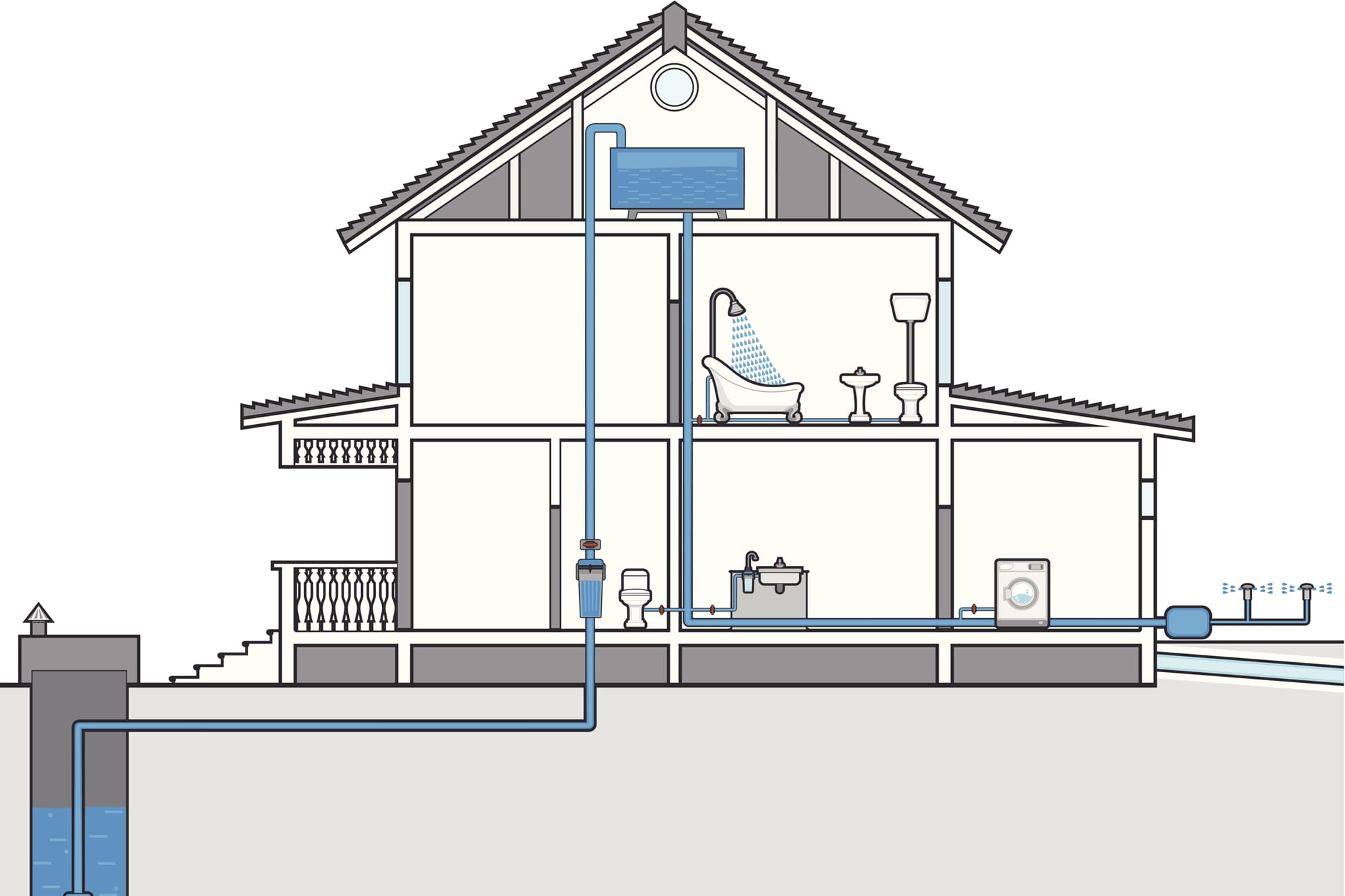Understanding The Structure of Your House's Plumbing System
Understanding The Structure of Your House's Plumbing System
Blog Article
We have stumbled upon this great article relating to Understanding Your Home's Plumbing Anatomy listed below on the internet and believe it made good sense to write about it with you on my blog.

Understanding exactly how your home's plumbing system functions is crucial for each homeowner. From providing clean water for drinking, food preparation, and showering to safely removing wastewater, a well-maintained plumbing system is critical for your household's wellness and convenience. In this comprehensive overview, we'll check out the detailed network that comprises your home's pipes and offer tips on upkeep, upgrades, and dealing with common problems.
Introduction
Your home's plumbing system is greater than just a network of pipes; it's an intricate system that guarantees you have accessibility to clean water and efficient wastewater elimination. Understanding its elements and how they work together can assist you stop expensive repairs and make sure every little thing runs smoothly.
Basic Components of a Pipes System
Pipelines and Tubes
At the heart of your plumbing system are the pipes and tubes that lug water throughout your home. These can be constructed from different products such as copper, PVC, or PEX, each with its benefits in regards to durability and cost-effectiveness.
Components: Sinks, Toilets, Showers, etc.
Fixtures like sinks, toilets, showers, and bathtubs are where water is used in your home. Comprehending just how these fixtures connect to the plumbing system assists in identifying issues and preparing upgrades.
Valves and Shut-off Factors
Valves manage the circulation of water in your plumbing system. Shut-off shutoffs are critical throughout emergency situations or when you need to make fixings, allowing you to isolate parts of the system without interrupting water circulation to the whole residence.
Water System
Key Water Line
The major water line attaches your home to the municipal water or a private well. It's where water enters your home and is distributed to numerous fixtures.
Water Meter and Stress Regulator
The water meter steps your water usage, while a stress regulator makes sure that water moves at a secure stress throughout your home's pipes system, protecting against damages to pipelines and components.
Cold Water vs. Warm water Lines
Recognizing the difference in between cold water lines, which supply water directly from the main, and hot water lines, which carry heated water from the water heater, helps in repairing and planning for upgrades.
Water drainage System
Drain Pipes Piping and Traps
Drain pipelines bring wastewater far from sinks, showers, and bathrooms to the drain or sewage-disposal tank. Catches protect against sewage system gases from entering your home and also trap particles that might trigger clogs.
Ventilation Pipelines
Air flow pipes allow air into the water drainage system, stopping suction that can reduce drainage and cause catches to vacant. Appropriate ventilation is essential for keeping the stability of your pipes system.
Relevance of Proper Water Drainage
Making certain appropriate drainage protects against backups and water damages. On a regular basis cleaning drains pipes and maintaining traps can prevent costly fixings and expand the life of your plumbing system.
Water Heating System
Kinds Of Hot Water Heater
Water heaters can be tankless or standard tank-style. Tankless heating systems warmth water on demand, while storage tanks keep warmed water for instant usage.
How Water Heaters Link to the Plumbing System
Comprehending exactly how water heaters attach to both the cold water supply and hot water distribution lines assists in diagnosing problems like not enough hot water or leaks.
Upkeep Tips for Water Heaters
Frequently flushing your hot water heater to remove debris, examining the temperature settings, and checking for leakages can expand its lifespan and improve energy performance.
Usual Plumbing Concerns
Leaks and Their Reasons
Leakages can occur because of maturing pipelines, loose fittings, or high water pressure. Resolving leaks without delay stops water damages and mold development.
Clogs and Obstructions
Obstructions in drains and bathrooms are frequently caused by purging non-flushable items or an accumulation of grease and hair. Utilizing drainpipe screens and being mindful of what drops your drains pipes can stop obstructions.
Signs of Plumbing Problems to Expect
Low tide stress, sluggish drains pipes, foul odors, or abnormally high water expenses are indicators of potential plumbing troubles that should be attended to promptly.
Plumbing Maintenance Tips
Routine Evaluations and Checks
Schedule annual plumbing inspections to catch issues early. Search for indications of leaks, rust, or mineral accumulation in faucets and showerheads.
Do It Yourself Upkeep Tasks
Basic tasks like cleansing faucet aerators, checking for bathroom leakages making use of color tablets, or protecting subjected pipes in cold climates can avoid major pipes problems.
When to Call a Specialist Plumbing Technician
Know when a plumbing issue requires expert expertise. Trying intricate repair work without proper understanding can cause even more damage and higher repair service prices.
Upgrading Your Plumbing System
Reasons for Updating
Updating to water-efficient components or changing old pipelines can boost water quality, decrease water costs, and boost the worth of your home.
Modern Pipes Technologies and Their Advantages
Check out innovations like wise leak detectors, water-saving bathrooms, and energy-efficient hot water heater that can save money and lower ecological effect.
Price Factors To Consider and ROI
Determine the upfront prices versus lasting financial savings when taking into consideration pipes upgrades. Lots of upgrades pay for themselves via lowered energy costs and less repair work.
Ecological Effect and Conservation
Water-Saving Components and Appliances
Mounting low-flow taps, showerheads, and commodes can substantially minimize water usage without sacrificing efficiency.
Tips for Lowering Water Usage
Straightforward practices like fixing leaks without delay, taking much shorter showers, and running full tons of laundry and dishes can save water and lower your utility costs.
Eco-Friendly Pipes Options
Think about lasting plumbing materials like bamboo for floor covering, which is durable and environment-friendly, or recycled glass for countertops.
Emergency Readiness
Steps to Take Throughout a Plumbing Emergency
Know where your shut-off shutoffs are located and just how to turn off the water system in case of a burst pipeline or major leakage.
Significance of Having Emergency Situation Get In Touches With Convenient
Maintain call information for regional plumbers or emergency solutions conveniently available for fast reaction during a pipes crisis.
Do It Yourself Emergency Situation Fixes (When Suitable).
Temporary solutions like using air duct tape to patch a dripping pipe or positioning a container under a leaking faucet can lessen damage up until a professional plumbing technician arrives.
Verdict.
Recognizing the anatomy of your home's pipes system empowers you to preserve it effectively, conserving money and time on repair work. By adhering to routine maintenance regimens and staying notified concerning contemporary plumbing modern technologies, you can ensure your plumbing system runs efficiently for many years ahead.
Understanding Your Home Plumbing System: A Comprehensive Guide
Plumbing System: The Lifeline of Your Home
At its core, the plumbing system is designed to perform two primary functions: bring fresh water into your home and remove wastewater. The system is a network of pipes, fixtures, and other components that transport water and sewage. Residential plumbing systems include potable water supply lines, drain-waste-vent (DWV) systems, and various plumbing fixtures that make water use in daily tasks possible.
Key Components:
Water Supply: This part of your plumbing system brings municipal water into your home, passing through the main water supply line. It s responsible for supplying all water needs, from drinking to bathing.
Drainage System: It carries waste and water away from your home to the sewer or septic system. This system includes all the piping within your home that leads to external sewage or septic systems.
Vent System: An essential yet often overlooked component, the vent system allows sewer gases to escape and lets air into the drainpipes, ensuring water and waste move correctly through the system.
Fixture: More Than Just Taps and Toilets
Plumbing fixtures are the most interactive parts of the plumbing system, including faucets, showers, toilets, and sinks. Each fixture is connected to the plumbing system and plays a role in either the delivery of freshwater or the disposal of waste and wastewater.
Types of Fixtures:
Faucets and Sinks: Used for washing hands, dishes, and other daily water needs. Toilets: Dispose of human waste through the sewage system. Bathtubs and Showers: Provide bathing facilities, requiring both hot and cold water supply. Water Supply: The Source of Life
The water supply system is a critical component, ensuring that potable water is available throughout your home for various uses, including drinking, cooking, and cleaning. This system consists of pipes that distribute water to different parts of the house, controlled by valves to regulate the water flow.
Types of Plumbing: Materials and Methods
Various types of plumbing systems and materials are used in residential settings, each with its advantages and applications. From copper and PVC pipes for water supply to cast iron and ABS for drainage, the choice of materials can impact the longevity and efficiency of your plumbing system.
https://intownplumbingtx.com/articles/home-plumbing-system-guide/

I hope you enjoyed our topic about Plumbing Installation 101: All You Need to Know. Thank you for taking a few minutes to browse our post. Make sure you pause to distribute this article if you appreciated it. I take joy in reading our article about .
Schedule Your Service Report this page